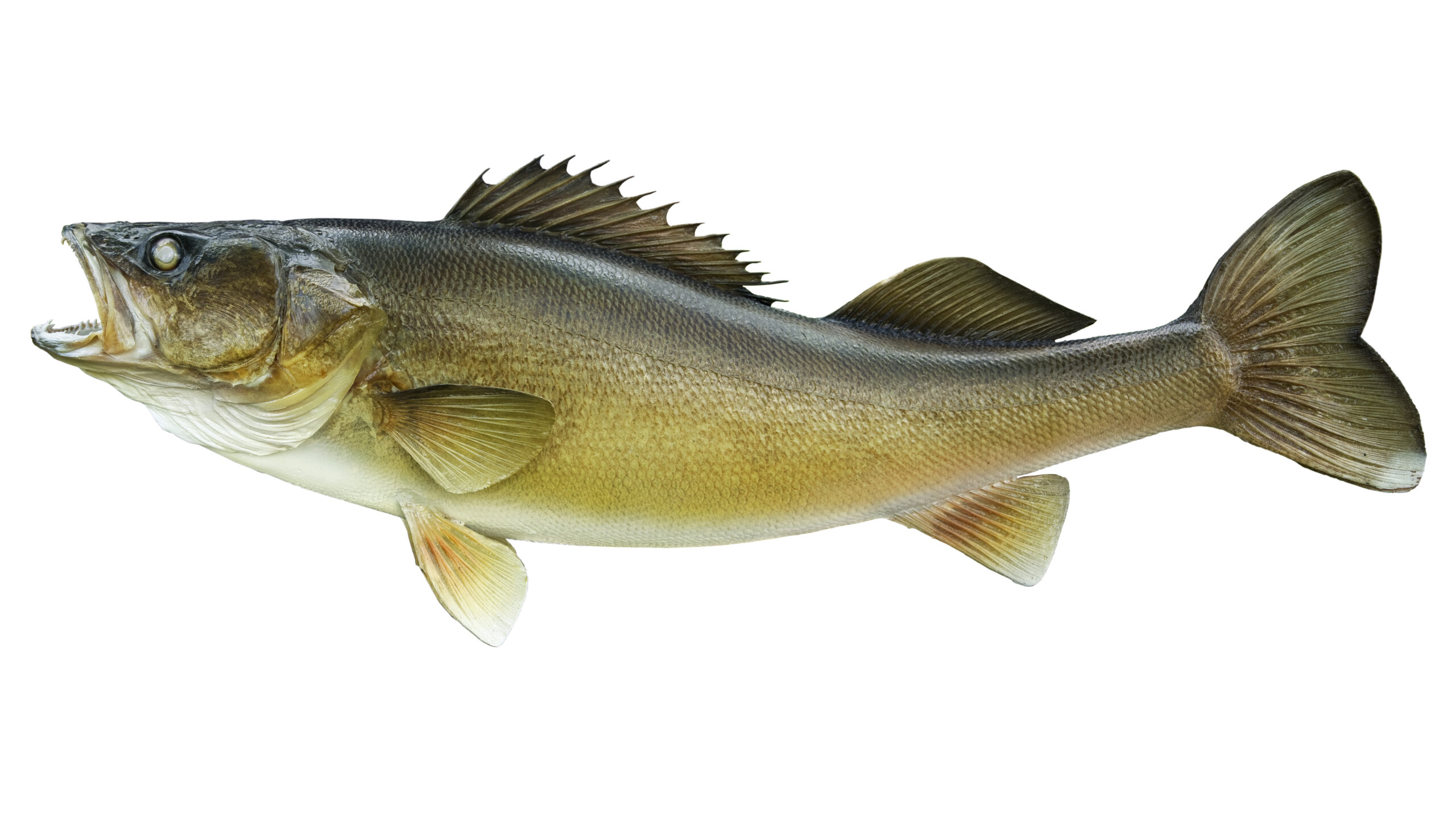Other common names:
Gold, white gold, blue gold
Scientific name :
Stizostedion vitreum
English common name:
Walleye

Identification
Body shape: Elongated body , slightly compressed laterally.
Average size: 30 to 50 cm (0.5 to 1.5 kg).
Coloration: Very variable depending on the habitat, marks paler in turbid water and brighter in clear water. Body olive brown, yellow or even gray and blue; small golden spots on the flank scales; diffuse mottling on the first dorsal fin and large black spot at its posterior end; tiny spots in fairly regular rows on second dorsal fin and caudal fin; white spot on the tip of the lower lobe of the caudal fin; eyes silvery due to the reflection of light on the layer of sensitive pigments which covers them.
Characteristic external features: Big eyes; cheeks smooth and almost scaleless; numerous and sharp teeth; two distinct dorsal fins, the first spiny (12-16 spines), the second soft-rayed; two thorns on the anal fin; at least one short, sharp thorn at the end of the operculum.
How to differentiate Sauger Walleye:
The black gold has:
longer and more cylindrical body;
smaller size (20 to 30 cm on average);
black spots on the first dorsal fin;
plays with rough scales.
Habitat
Cool (13 to 21 o C), shallow (less than 15 m) and turbid water. Abundant in large lakes and rivers, also present in smaller lakes, reservoirs and medium-flowing rivers.
Walleye are more adaptable to their habitat than sauger, and are more abundant and widespread than walleye.
Food
Walleye feed primarily on fish. It is not very selective and feeds according to the availability of prey. However, yellow perch and yellow perch are very important in its diet, when present. Cannibalism is also possible. It also eats insects, leeches, crayfish, slugs, small snakes and salamanders, frogs and small mammals. In turbid water, walleye feed throughout the day. On the other hand in clearer water, given the great sensitivity of its eyes to daylight, it forages in shallow areas at sunrise and sunset.
Reproduction
Season: Spring or early summer after the ice melts, early April until the end of June.
Type of spawning ground: Very variable. Shallow, well oxygenated water with gravel bottom. Rivers, foot of falls, shoals and lake shores exposed to winds.
Mode: The first reproduction occurs between 3 and 8 years depending on the sex and the habitat (2 years for males and 5 years for females in the St. Lawrence River). Walleye, mostly female, tend to be loyal to their spawning grounds. Spawning takes place at night in groups of one or two females and 2 to 6 males. No nest is built. Eggs 1.5-2.0 mm in diameter are released at random and fall to the bottom. Depending on the size of the female, their number varies from 50,000 to 300,000. The eggs hatch after 12 to 18 days.

